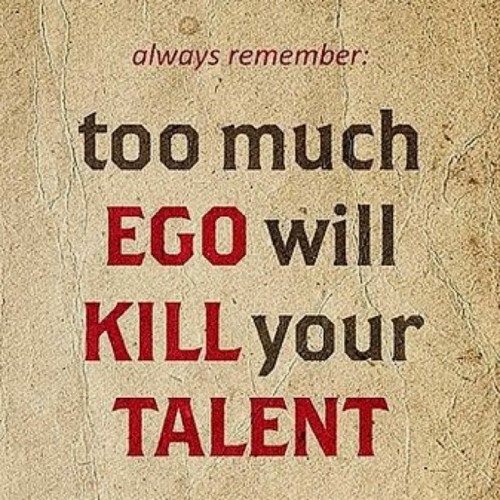Pais como eu, andam todos baralhados!
Será que assinámos um contrato de prestação de serviços ou um acordo societário?
Sr. Diretor da escola dos meus filhos, recordo-me de ter assinado o primeiro, mas não me lembro de ter assinado o segundo!
Escolhemos colocar os nossos filhos na escola, neste caso creches e jardins de infância, porque necessitamos que profissionais qualificados, em todos os níveis hierárquicos, prestem um serviço de apoiar a educação que queremos ver no desenvolvimento de competências pedagógicas e cognitivas nos nossos filhos, assumindo a sua total responsabilidade.
Todos os pais têm princípios e valores que procuram ensinar e dotar os seus filhos para que um dia eles possam estar preparados para enfrentar o mundo onde vivemos e onde eles irão viver um dia por sua conta e risco. Nesse caminho decidimos pedir apoio a instituições, como escolas, que possam ajudar-nos a preparar os nossos filhos através de competências e processos que não dominamos mas que queremos que eles conheçam e treinem. Quando tomamos essa decisão abordamos algumas instituições no sentido de nos garantirem que fazem o seu papel de forma profissional, responsável e comprometida, de preferência com paixão, da mesma forma que o faríamos se também tivéssemos que desempenhar esse papel, e de acordo com os valores que acreditamos serem os melhores e, já agora, que possam traduzir de alguma forma os mesmos valores que vivemos em família.
Quando encontramos uma instituição, que acreditamos ter o maior número destes atributos e competências, tentamos perceber se o custo que teremos que suportar para pedir este apoio está de acordo com as nossas capacidades financeiras. Se assim for, fazemos um contrato de prestação de serviços com essa instituição para que possa prestar esse mesmo serviço.
A partir desse momento, como em qualquer contrato, existem direitos e deveres assumidos por ambas as partes. Os alunos e pais têm que cumprir os seus e a escola deverá cumprir os que lhe compete. Se por acaso alguma das partes não cumprir devem conversar para encontrar uma solução que garanta o seu cumprimento, de acordo com o estipulado nesse mesmo contrato.
De acordo com a lei se ambas as partes entram em incumprimento, desses direitos e deveres assumidos num contrato de prestação de serviços, esse mesmo contrato é anulado por incumprimento mútuo.
Recentemente com o aparecimento deste vírus que veio mudar as nossas vidas, as escolas tiveram que fechar, deixando de prestar o serviço de acordo com o contrato, e os pais, foram também forçados e proibidos de deixar os seus filhos nas escolas.
Ainda assim, algumas escolas continuam a exigir aos pais que cumpram com os seus deveres independentemente de estas cumprirem com os seus. Alegam que têm custos e que têm que os cobrir para manterem as escolas abertas.
Afinal de contas, assinámos um contrato de prestação de serviços ou nesse contrato diz também que somos sócios e não sabemos?
Preocupei-me a ler vários contratos e é curioso que em nenhum deles existem cláusulas onde temos a responsabilidade de gestão da escola. Em nenhuma cláusula aparece nenhuma referência à nossa responsabilidade de gestão financeira das mesmas, o que me parece natural, pois essa responsabilidade, de encontrar soluções para a sobrevivência de uma instituição privada, cabe à estrutura societária e acordo com os estatutos que são aprovados pela gerência das mesmas.
Logo parece-me que os diretores destas instituições deviam ler os respectivos contratos que assinaram com os pais e talvez participar, até de forma gratuita, na panóplia de webinars e formações on-line que todos os dias existem no mundo para ajudar, de forma gratuita e sem pedir NADA em troca, os valores éticos que devemos assegurar em tempos de crise. Excelentes para líderes como eles assim como estão a ser para líderes de organizações e instituições a nível mundial com uma dimensão 1000x maior e com problemas de tesouraria, com gestão de pessoas ou de reinventar negócios, muito mais desafiantes que os que estão a encarar nas suas escolas.
Nestas palestras tem-se falado muito do valor da humildade e solidariedade nos tempos atuais, não se fala de ditadura nem de manipulação porque não resultam, nem em tempos de crise nem sem ser em tempos de crise, simplesmente são estratégias de liderança que já foram ultrapassadas ou já não fazem sentido.
Existem sim novas formas de liderança, como a liderança colaborativa, onde os líderes têm hábitos de reunir com os vários players, diretos ou indiretos, do seu negócio para partilhar ideias e propostas que, em conjunto se possam construir soluções que agradam a todos, sejam colaboradores, clientes, fornecedores, concorrentes ou até instituições sociais que possam ser afectadas ou beneficiadas com as futuras tomadas de decisão.
Também se tem falado muito que é nestas alturas de crise que as lideranças e valores éticos, onde assentam as suas decisões e comportamentos, do dia-a-dia, se revelam. É por isso muito interessante assistir aos comportamentos emotivos e reativos das direções, pouco elucidadas, das nossas organizações e instituições de educação.
Portanto aqui ficam algumas reflexões que queria partilhar aos diretores destas instituições específicas que se propuseram um dia a prestar um serviço educativo aos nossos filhos:
Não nos compete a nós, pais das crianças a quem os Srs. assumiram um dia que estavam comprometidos em ajudar a educar, e a passar-lhes os valores que eles devem aprender para construirmos um mundo melhor, sermos agora chamados para vos substituir na gestão dos vossos negócios.
Essa é uma responsabilidade vossa. Ninguém nos chama nem nos convoca para contratar uma nova educadora nem para decidir a ementa da escola que deve ser dada aos nossos filhos. Quando tentamos sugerir essas alterações todos sabemos as respostas que ouvimos ou as alterações realmente efectuadas e temos que respeitar que essa não é a nossa responsabilidade. Ninguém nos pede para participar nas reuniões de gestão das escolas para serem feitas melhores decisões para garantir um bom serviço da escola. Não o fazem porque isso é uma responsabilidade da escola. Embora nós pudéssemos até estar disponíveis, as tomadas de decisão finais são sempre da direção. Que a direção da mesma deve assumir para si, pois faz parte das responsabilidades dos gestores tomarem as decisões necessárias para que a escola funcione em perfeitas condições para prestar não só o ensino aos nossos filhos como para garantir os lucros aos seus sócios.
Então porque é que agora nos querem passar a responsabilidade a nós, pais e clientes de uma empresa, a responsabilidade de pagar por um serviço não prestado?
Isso quer dizer que a partir de agora também vamos opinar sobre as decisões de gestão do dia a dia das escolas dos nossos filhos?
Também teremos o direito de ver os custos e proveitos da escola?
Também vamos ter acesso a margens de lucro e poderemos questionar?
Será que este é um convite para entrarmos para as sociedades das escolas dos nossos filhos?
Temos que perceber, assumir e respeitar as responsabilidades de cada um e estarmos comprometidos com as mesmas!
Ultimamente, já estamos suficientemente carregados de Medos nas nossas vidas!
O que os Srs., gestores das escolas que atualmente estão a exigir pagamentos aos pais através de ameaças, de não assegurarem o lugar dos nossos filhos quando estes regressarem, é pura manipulação pelo medo! Será que também ensinam isso aos nossos filhos?
O que estão a fazer é a revelarem um conjunto de valores éticos com os quais os Srs. tomam as vossas decisões no dia-a-dia. Isso revela que tomam decisões, em ultima instancia, a favor dos vossos interesses pessoais e não dos nossos filhos.
Isso quer dizer muito mais, a nós pais, sobre as pessoas que estão a gerir as escolas dos nossos filhos do que os Srs. pensam. Lembrem-se que são os vossos comportamentos que definem quem são e o que são capazes de fazer.
Os pais que realmente valorizam valores éticos como a solidariedade, educação, humildade, profissionalismo, compromisso, responsabilidade, não se reveem nestes comportamentos e estão agora a pensar que tipo de valores podem ser dados aos seus filhos nestes estabelecimentos.
Até porque todos sabemos que as empresas e instituições são o reflexo dos seus líderes e dos valores que acreditam.
Se pedissem ajuda aos pais para encontrarmos soluções de apoio à escola que pudessem ajudar a escola a passar este período complicado e juntos, uns mais outros menos, ajudarmos a escola financeiramente, uns pro-bono outros a crédito futuro, ou outras ideias, para continuarmos a garantir um mundo onde os nossos filhos gostam de estar, aprender e crescer, novas competências e amizades, teriam muito mais sucesso que exigir e tentar manipular.
Estariam aí sim a assumir que vivem com os valores da humildade e que também são solidários com os desafios que todos temos, pois não são apenas as escolas que ficaram sem dinheiro. A maioria dos pais também ficou.
Será que seria justo nós também irmos pedir ou exigir, aos diretores das escolas onde os nossos filhos andam, que nos deem dinheiro para pagar a mensalidade da escola? Como é que eles se iriam sentir?
Conclusão: Obrigado por serem tão claros na exposição dos vossos valores. Podem ocupar o lugar dos nossos filhos à vontade. São os pais que não querem que os seus filhos aprendam os valores que se vivem nestas instituições.
Eles serão sempre a nossa prioridade!




















